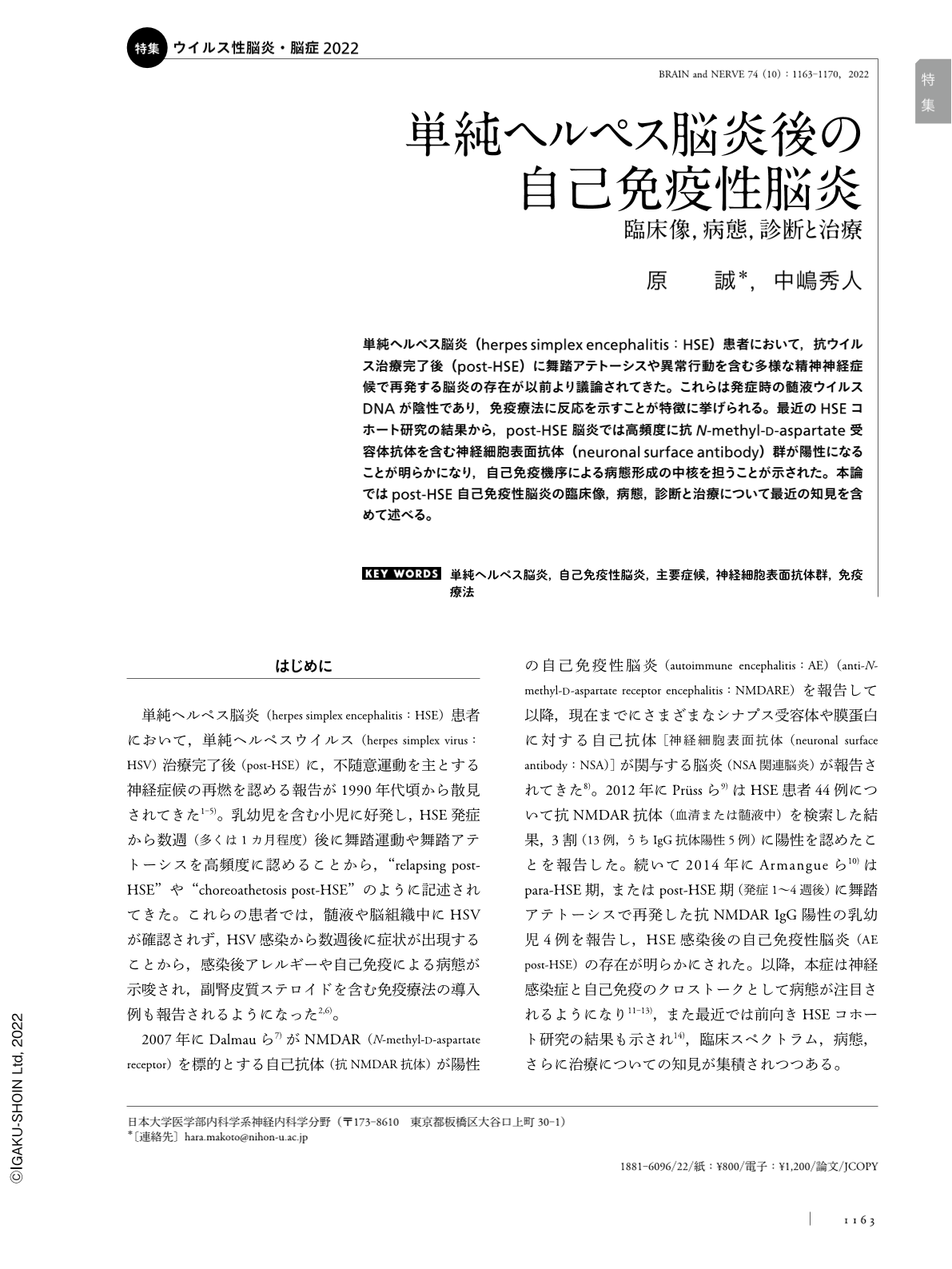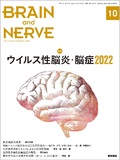Japanese
English
- 有料閲覧
- Abstract 文献概要
- 1ページ目 Look Inside
- 参考文献 Reference
単純ヘルペス脳炎(herpes simplex encephalitis:HSE)患者において,抗ウイルス治療完了後(post-HSE)に舞踏アテトーシスや異常行動を含む多様な精神神経症候で再発する脳炎の存在が以前より議論されてきた。これらは発症時の髄液ウイルスDNAが陰性であり,免疫療法に反応を示すことが特徴に挙げられる。最近のHSEコホート研究の結果から,post-HSE脳炎では高頻度に抗N-methyl-D-aspartate受容体抗体を含む神経細胞表面抗体(neuronal surface antibody)群が陽性になることが明らかになり,自己免疫機序による病態形成の中核を担うことが示された。本論ではpost-HSE自己免疫性脳炎の臨床像,病態,診断と治療について最近の知見を含めて述べる。
Abstract
Autoimmune disorders, such as choreoathetosis and abnormal behavior secondary to herpes simplex encephalitis (HSE), are discussed in this review. These disorders are known to develop without any evidence of HSE relapse, while they respond to immunotherapies such as intravenous corticosteroids. Recent evidence, including a prospective Spanish cohort study of HSE, revealed that autoimmune encephalitis (AE) can be triggered by HSE, which is closely related to several neuronal surface antibodies (NSAs). Anti-N-methyl-D-aspartate encephalitis (NMDARE) is the most common phenotype of AE post-HSE. Moreover, approximately 30% of cases of AE post-HSE are caused by NSAs against undetermined antigens. Thus, patients suspected of having AE post-HSE should be tested for NSAs using comprehensive techniques combining tissue-based and cultured live neuron assays. The primary syndrome of AE post-HSE is age dependent, as demonstrated in non-post-HSE onset NMDARE. Choreoathetosis is the most common symptom in infants and toddlers, while abnormal behavior and psychiatric symptoms are the most common symptoms in adolescents and adults. Regarding the treatment, current knowledge reveals that intensive immunotherapies can be used to treat AE post-HSE and lead to better outcomes although a minority of cases show recovery without immunotherapy administration.

Copyright © 2022, Igaku-Shoin Ltd. All rights reserved.


